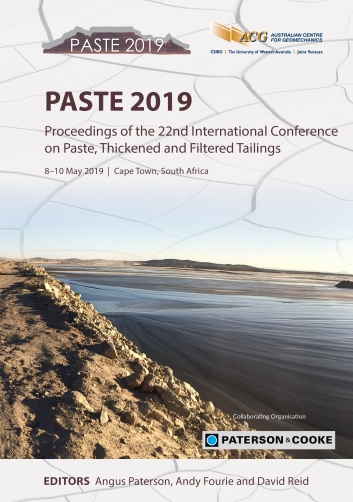Tailings properties affecting the stacking angle of cyclone underflow

|
Authors: Cooper, RA |
DOI https://doi.org/10.36487/ACG_rep/1910_10_Cooper
Cite As:
Cooper, RA 2019, 'Tailings properties affecting the stacking angle of cyclone underflow', in AJC Paterson, AB Fourie & D Reid (eds), Paste 2019: Proceedings of the 22nd International Conference on Paste, Thickened and Filtered Tailings, Australian Centre for Geomechanics, Perth, pp. 173-181, https://doi.org/10.36487/ACG_rep/1910_10_Cooper
Abstract:
The storage capacity and rate of rise of a tailings storage facility (TSF) constructed utilising the tailings to form the TSF is dependent on the outer side slopes of the facility. A number of TSFs in South Africa are operated utilising cyclones to construct the outer wall zone of the TSF. The outer slope is dependent on the stacking angle of the cyclone underflow and hence it is critical that the design of the TSF accurately estimates the stacking angle. There are no clear guidelines to make this estimation other than to compare to similar projects. This methodology has resulted in a few TSFs in which the stacking angle was either over or underestimated leading to an inaccurate life assessment. This paper hypothesises that the yield stress of the underflow has the most significant effect on the stacking angle. The hypothesis is tested by measuring various tailings properties on a tailings operation in relation to the stacking angle achieved to attempt to develop a method to predict the stacking angle for future projects.
Keywords: tailings, cyclones, stacking angle, yield stress
References:
Pashias, N & Boger, DV 1996, ‘A fifty cent rheometer for yield stress measurement’, Journal of Rheology, vol. 40, no. 6,
pp. 1179‒1189.
© Copyright 2025, Australian Centre for Geomechanics (ACG), The University of Western Australia. All rights reserved.
View copyright/legal information
Please direct any queries or error reports to repository-acg@uwa.edu.au
View copyright/legal information
Please direct any queries or error reports to repository-acg@uwa.edu.au


